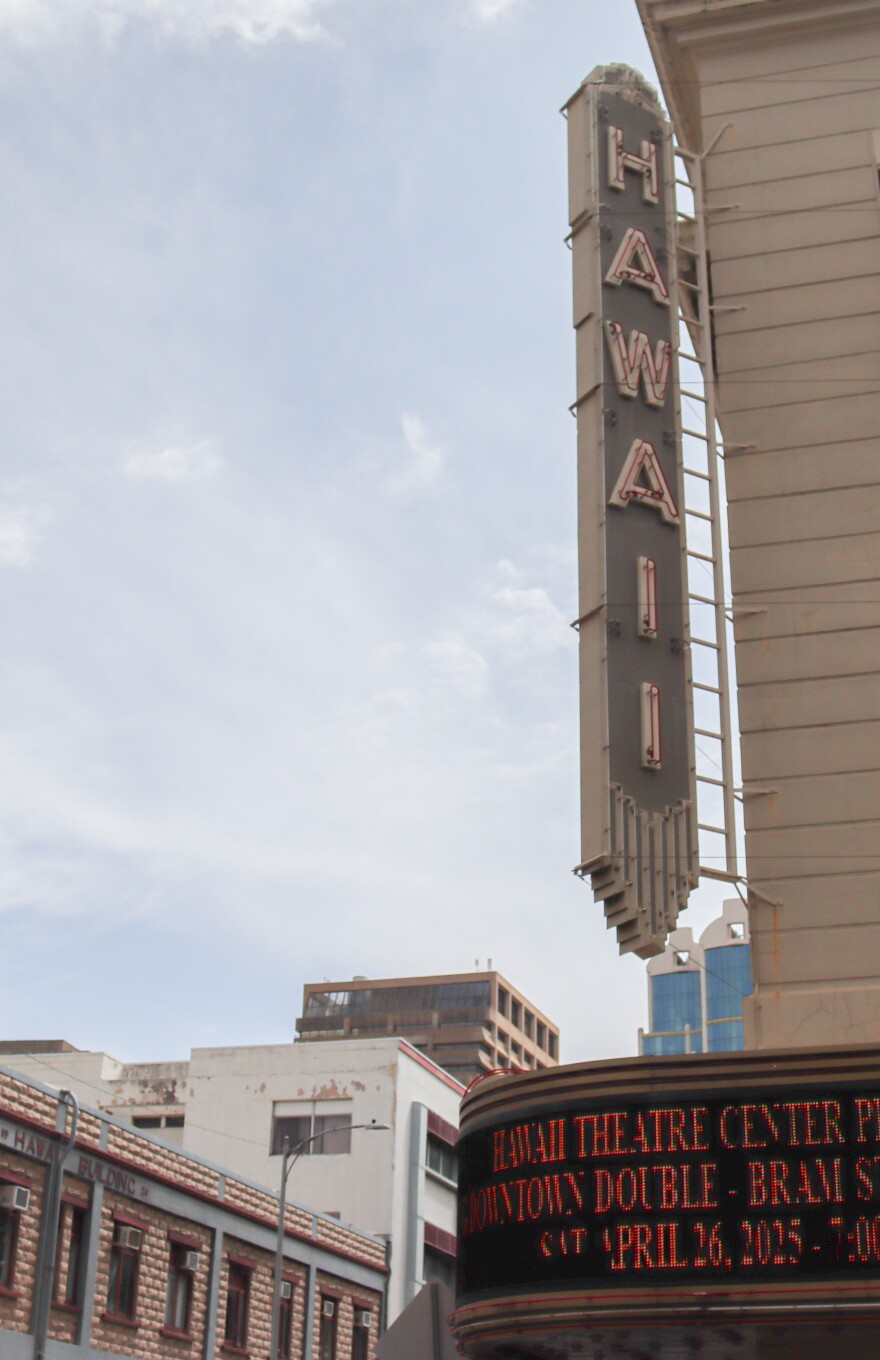The Hawaii Theatre has a knack for survival, going through two pandemics in its 103-year-old lifespan. Yet it’s still able to keep its marquee sign illuminating Honolulu's Chinatown neighborhood.
But leaders of the historic venue say they can no longer afford the rising cost of property insurance and are hoping the state can step in to purchase the property.
Whether that actually happens has yet to be determined, and it's up to Gov. Josh Green's administration.
“The buildings themselves are preserved, and it's our responsibility to ensure that they’re here as you see them for the future,” said Gregory Dunn, president and CEO of the nonprofit Hawaii Theatre Center.
He said it's a daunting task to upkeep the century-old venue. Other than maintaining air conditioning and running electricity, the theater’s carpet, curtains, and more than 1,400 seats will eventually need to be replaced.

But the rising property insurance has been a big financial undertaking for the nonprofit.
Last year, Hawaii Theatre Center paid $2 per $1,000 of property insurance coverage. This year, the nonprofit paid $90 per $1,000 of property coverage.
Dunn said the nonprofit can only afford $5 million of coverage. That’s less than 10% coverage of the theater building.
“If something catastrophic happened, we would not have the funds available to rebuild or repair anything over the $5 million mark,” he said.
Hawai‘i lawmakers adopted Senate Concurrent Resolution 131 last month.
Sen. Karl Rhoads, who represents Chinatown, co-authored the measure. He said the next step is talking with Green's administration about the possibility of buying the theater. Then the nonprofit is still able to run it.
“What's more likely is that we would have them or another nonprofit run it, but the state would keep title to the property,” he said.
The state has invested about $30 million in public grants and assistance to renovate and preserve the theater, according to the resolution.
But it's unclear whether the state will take on the financial responsibility of owning another property with the uncertainty of federal funding.
“The federal government is trying to cut allocations to the arts in particular, so that’s not a good sign,” Rhoads said. “There are a lot of variables and a lot of unknowns.”
Hawaii Theatre is one of the few surviving freestanding neighborhood theaters on O‘ahu.
The theater was built in 1922, two decades after the Chinatown fire that destroyed a significant portion of the neighborhood due to the bubonic plague outbreak.
Construction of the theater was initially pushed back a few years due to the 1918 Spanish flu.
The building's neoclassical architecture was modeled after theaters in New York. Its structure features Corinthian columns, a gilded dome and a Lionel Walden Mural.

The hallways and rooms are adorned with artworks. A VIP room has a mural painted by Native Hawaiian artist Solomon Enos.
Hawaii Theatre has been through many transformations since opening its doors in 1922. Located on Bethel Street, the theater was the hub of entertainment throughout the 1900s.
It was primarily a movie house in the 1930s and 1940s that catered to people in the military.
The theater has a quirky history, highlighting symphony performances and showcased movies from karate films to porno flicks.
Dunn said in the 1950s and 1960s, the theater at the time was wearing down.
“A major shift happened,” he said. “People got TVs in their homes, and people didn’t come to the movies as much anymore. They also didn’t want to come to Chinatown as much because the seedy nature of Chinatown had gotten grittier and grittier over time.”
The theater was listed on the National and State Registers of Historic Places, prompting a movement to preserve the longevity of the theater. The nonprofit Hawaii Theatre Center was formed in 1984 due to community members wanting to protect the theater from demolition.
The theater had been closed in the 1980s before it reopened in 1996 with renovations.

Robert Armstrong, a member of the Downtown-Chinatown Neighborhood Board, said the theater is a part of the community.
“It’s a landmark,” he said. “It is an important centerpiece of who we are as a community. There are very few buildings like that left."
Armstrong has volunteered at the theater in previous years. He said his favorite memory was when the symphony orchestra performed Disney’s “Frozen” soundtrack, adding that little girls in the audience were singing along.
“They were singing at the top of their lungs, let it go, let it snow,” he said. “It was just so darling, and I can't imagine that there are many venues that would give you that experience or make a difference to so many young people at that moment.”





